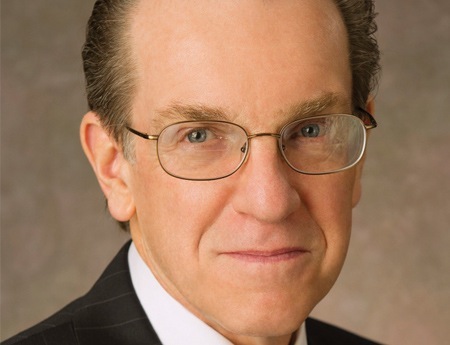Poltrack Sees Broadcast Ad Spending Flat in 2017

CBS chief research officer David Poltrack forecasts that the broadcast network's ad revenue will be flat in 2017 versus 2016, a more positive forecast than most analysts have issued.
Speaking at UBS' Global Media and Communications Conference in New York Monday, Poltrack said that excluding the effects of the Olympics, underlying ad growth would be about 4%, little changed from 2016's underlying growth rate.
Related: Political Questions Weigh On GroupM Ad Forecast
Poltrack said he lowered his estimate for 2016 broadcast advertising growth to 8% from 9.5% because more spending on the Olympics came from existing budgets than he expected. He also lowered the 2016 underlying rate of ad growth to 4% from 5%.
Other forecasters see spending down in 2017, with underlying growth rates excluding the Olympics and elections of about 2%.
Related: Magna: TV Ad Spending To Drop 0.9% in 2017
The reasons for being more bullish than most analysts were because of marketers shifting money from promotion to advertising and at the same time TV advertising recovering budgets that have been spent on what Poltrack called "non-productive digital initiatives."
Broadcasting & Cable Newsletter
The smarter way to stay on top of broadcasting and cable industry. Sign up below
Poltrack said the TV ad market is showing increased stability compared to the past several years. "We need to redefine the boundaries between TV and digital advertising," he added.
"Long-form video is where the action is now in the digital sectory," he said, noting that revenues for long-form video was up 54%. Next year, long-form digital video will be up another 40%,compared to 11% growth for digital overall, he added.
"Does long-form digital video really belong in the broader digital sector, or should it be part of the teleivsion sectory?, he asked. "I'm proposing that we separate it out from both of these categories and give it a category of its own."
He added that long-form digital video is not a wholly ad supported medium and is more and more a subscriber funded sector.
"Only when you separate this out it become clear it is as moreof a growth engine for CBS, NBC, ABC and Fox than it is for the digital players," he said.
Poltrack noted that the 2016-17 upfront was much stronger than the previous two years. That strength was driving by high premiums in the scatter markets.
He said that makegoods for viewer under deliveries were manageable for the networks, notably Fox, which was able to extinguish much of its obligations during its high-rated World Series.
While comparisons to the first quarter will be tough, a 4% increase in 2017 is still possible, Poltrack said. Growth should be 5% in the second quarter.
He added that economic indicators are looking strong going into 2017, with GDP growth picking up, consumer spending accelerating, wages growing and retail sales moving in a positive direction. "All of that is good for the ad market," Poltrack said.
Poltrack also addressed the decline in NFL ratings.
"We believe the major cause of the lower ratings in the first half was incremental competition from coverage of the Presidential race," he said.
He said that after Election Day, NFL ratings usually go up about 8% and so far this season, they are up 15% since Election Day.
While NFL ratings are "still slightly below last year, the gap is narrowing," he said. "We expect it to go away entirely."
He noted that Fox's Thanksgiving Day game featuring the Dallas Cowboys versus the Washington Redskins drew record ratings.
He said there was no reason to believe that NFL ratings wouldn't continue to be strong going into the future.
Jon has been business editor of Broadcasting+Cable since 2010. He focuses on revenue-generating activities, including advertising and distribution, as well as executive intrigue and merger and acquisition activity. Just about any story is fair game, if a dollar sign can make its way into the article. Before B+C, Jon covered the industry for TVWeek, Cable World, Electronic Media, Advertising Age and The New York Post. A native New Yorker, Jon is hiding in plain sight in the suburbs of Chicago.










